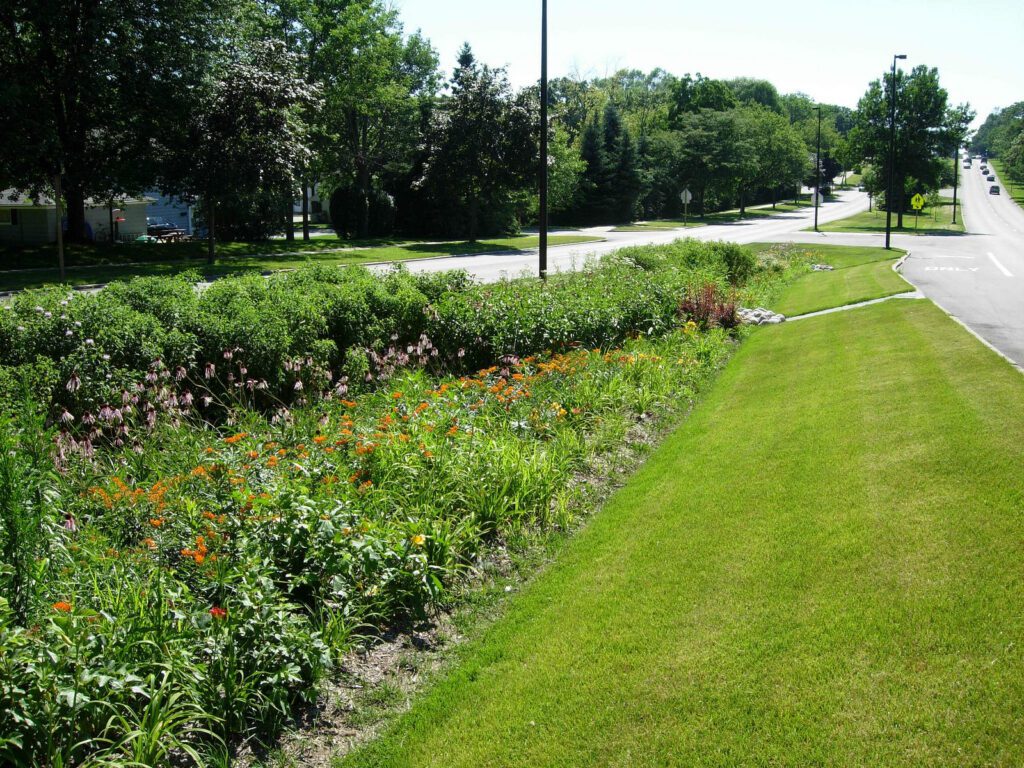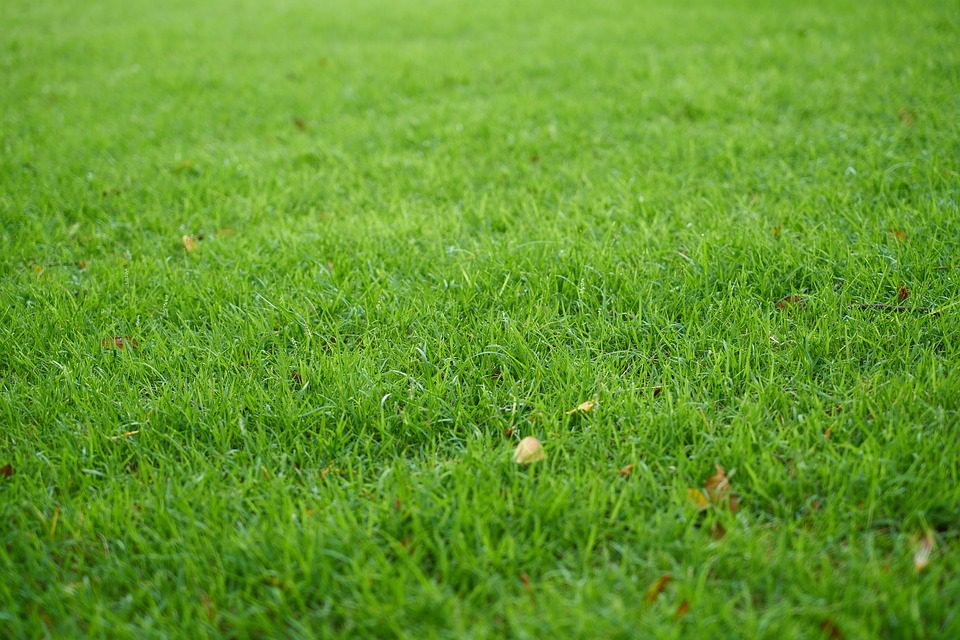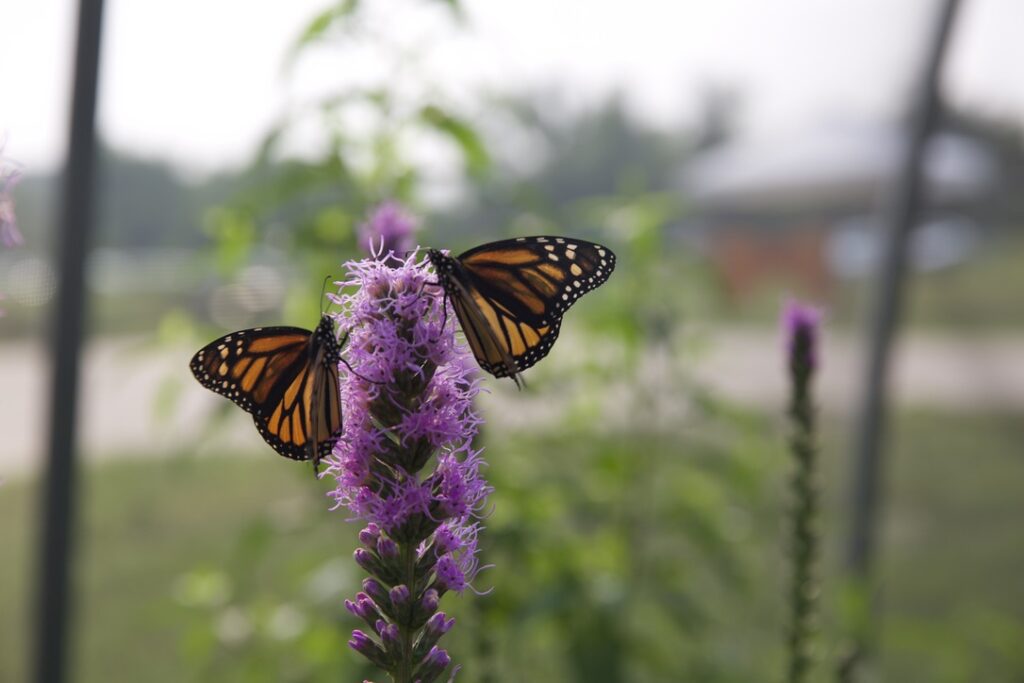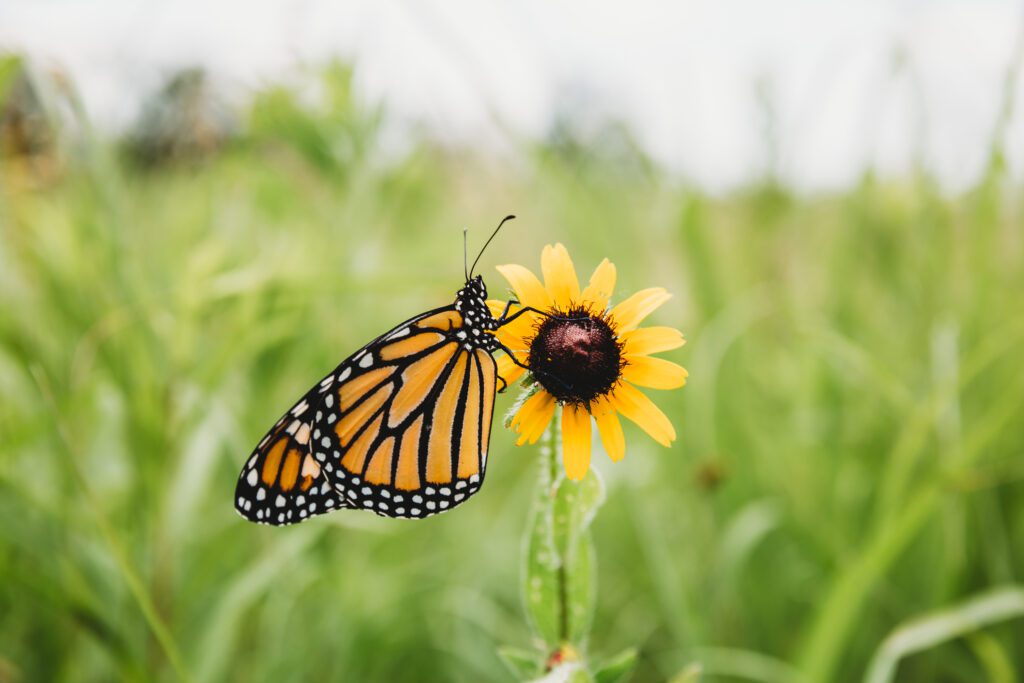What is a mini prairie?
The plight of our pollinators is a far-reaching problem that impacts all of humanity, but what if there’s a small way that you can make a difference? Meet the mini prairie.
Mini prairies are small areas of native flowers and grasses planted to give pollinators a reliable source of food and shelter. These mini prairies can be as small as a plant pot on an apartment deck or they can encompass your entire yard. The great part is that no matter how much space you have to share with our pollinators, you can help.
Why plant a mini prairie?
Mini prairies help to replace the larger habitats pollinators have lost to urban sprawl, monoculture agriculture and modern lawn care practices. As the vast native prairies and woodlands across Iowa were replaced by industrial farm fields, concrete and grass lawns, the plants our butterflies, bees and other pollinators rely on became harder to find. As you’d expect, the creation of more fields, houses and roads devastated the pollinator population, which one study estimates was reduced by 57% between 1998 and 2020.
In order to bring back the pollinator population, we must restore their habitat. While restoring large swaths of land back to native prairie may take decades, we can collectively create homes for pollinators across our community with mini prairies.
Each mini prairie gives caterpillars, bees, moths, butterflies and more a safe haven where they can nest, feed and grow. Every time a neighbor adds native flowers and other pollinator-friendly plants to their yard, a small piece of the habitat that has been lost over the years is restored.
Mini prairies help humans, too.
Clearly, mini prairies are good for pollinators, but they are also good for us — humans!
The devastation of pollinator species could also mean large-scale problems for the human species. According to the Food and Drug Administration, around 90% of commercially produced crops in the human diet depend on pollination. Without pollinators, the human diet would be dramatically changed. The loss of pollinators would mean a world without honey, almonds, apples, broccoli, melons, pumpkins, berries and many, many more foods we take for granted.
Planting native flowers and grasses and allowing them to grow without the use of herbicides is good for the pollinators, as well as for you and your neighbors. Chemical pesticides used in lawn care have been connected to adverse health effects ranging from irritating the skin to affecting the nervous system.
If the mini prairie is in your yard the pollinator-friendly plants also reduce runoff due to their deep root systems, use less water than a manicured grass lawn and eliminate the need for fertilizer. This can help homeowners avoid the headaches associated with flooded basements and reduce the maintenance required for a beautiful yard.
Plus, we can’t forget the best benefit of mini prairies — the visitors. Depending on the plants you grow, you can expect a variety of wonderful creatures to visit you, including caterpillars, butterflies, moths and hummingbirds.
You don’t have to own several acres, or even a yard, to help your local ecosystem. With a few seeds you can help bring back the pollinator population in our community — one plant at a time.
Read our next blog post to discover the steps it takes to plant your own mini prairie.

A mini prairie is a small, densely planted garden of native flowers and grasses.

A lawn consisting of only grass provides no food or shelter for pollinators.

It’s more than honey! Bees and other pollinators are vital to 90% of the crops human consume.

Mini prairies can be part of a beautiful, safe, low maintenance yard that gives pollinators food and shelter.

